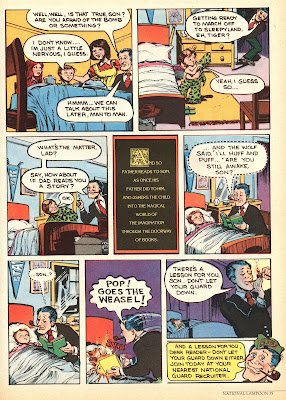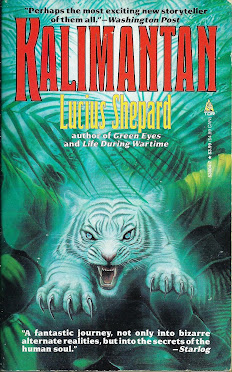Book Review: 'Dirty Pictures' by Brian Doherty
'Dirty Pictures' (439 pp.) was published by Abrams Press in 2022. The author is a senior editor at Reason magazine and has published books on various pop culture phenomena, such as the Burning Man festival and its adherents.
'Dirty Pictures' joins Mark James Estren's 1993 book, 'A History of Underground Comics', and Patrick Rosenkranz's 'Rebel Visions', from 2008, as histories of the comix movement. But I should stress that 'Dirty Pictures', unlike Estren's and Rosenkranz's books, does not have any illustrations. This likely is due to the complexities of getting permissions to reproduce artwork (something that got Dez Skinn's 2004 book, 'Comix: The Underground Revolution', in trouble). I was unperturbed by the absence of graphics, but some reviewers at amazon are decidedly unhappy with this aspect of 'Dirty Pictures'.
'Dirty Pictures' traces the history of comix, through the experiences of some of the more well-recognized artists, printers, and publishers in the field. Chronologically, 'Dirty Pictures' covers the inaugural efforts by artists to self-publish comix in the early 1960s, and concludes with the state of the endeavor in the late 2010s. Doherty bookends his narrative with Robert Crumb, which is sensible, as Crumb is the foremost practitioner of comix.
Given that 'A History of Underground Comics' and 'Rebel Visions' more or less end their observations in the mid- to late- 1970s, Doherty's book has merit in terms of covering the decades when comix slowly transformed from 'floppies' printed in black-and-white on low-grade paper, to 'independent' comics and graphic novels issued by well-respected publishing houses.
As far as the heydays of the 1970s are concerned, 'Dirty Pictures' doesn't offer any real revelations as compared to what already has been presented in Rosenkranz's book, although Doherty does provide some newer anecdotes and observations related to him via interviews with the ever-dwindling cohort of artists who came on the scene in that era. Doherty does shed considerably more light on the mechanics of printing and distributing the books, and the economics of this process, which is where I found 'Dirty Pictures' to be informative.
Doherty also gives attention to the at-times fractious relationships between the genre's major artists, which was somewhat inevitable given the transgressive nature of comix and the willingness of Crumb and S. Clay Wilson to produce material that violated the peace n' love vibe of the hippie era. Egos, and arguments, and snits, and refusals to invite artists to contribute to some titles, were not rare in the 70s and early 80s.
There are a number of areas where, in my opinion, 'Dirty Pictures' misses the mark:
• The author's prose is stilted, and often features lengthy, run-on sentences where I had to do more work than I wanted to to fish out subjects and objects from awkwardly constructed clauses. Things reach an exasperating level on page 389, which entirely is one sentence, riveted together with semicolons, related in a kind of breathless, stream-of-consciousness, Hipster argot.
• As an author of books dealing with liberal / left-wing topics, and as an editor for a progressive magazine, Doherty obviously is compelled to provide Equity and Inclusion to his overview of comix. Accordingly, the contributions of women to the field is overstated, and inevitably, Aline Kominsky Crumb is heavily referenced.
• For a book dedicated to an art form, 'Dirty Pictures' gives scant attention to the process by which the profled art actually was created. We never are informed as to how Crumb and Spain and Deitch and Charles Burns made their works: did they all sit down with Number 2 pencils and a sheet of Bristol Board ? Nor is the influence of the newer, digital technologies that were available in the 1990s for comix creation given much shrift.
• A major feature of comix was their humor. From the start they were intended to be funny and they succeeded, with storytelling that was outrageous, and provocative, and in contempt of 'bourgeoisie' values. Reading my copies of 'Freak Brothers', 'Young Lust', 'Mickey Rat', and 'Checkered Demon' still makes me laugh out loud. Yet this aspect of comix gets little attention in 'Dirty Pictures', with the author intent on belaboring the social-political-cultural implications of 'serious' works, like 'Maus'.
I'm comfortable with giving 'Dirty Pictures' a three-star Rating. If you are a fan of comix and interested in the history of the medium, then the book will be a worthwhile read. However, those looking for a less pedantic, and more accessible, overview of comix probably are better off consulting the books by Rosenkranz and Estren.










































































